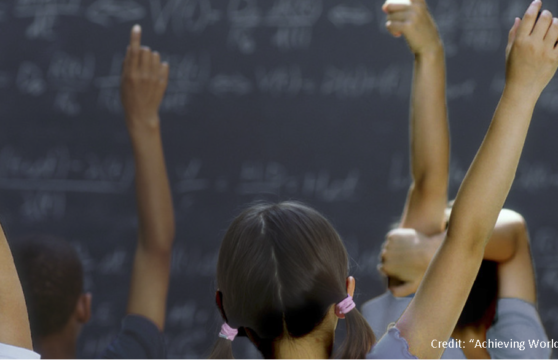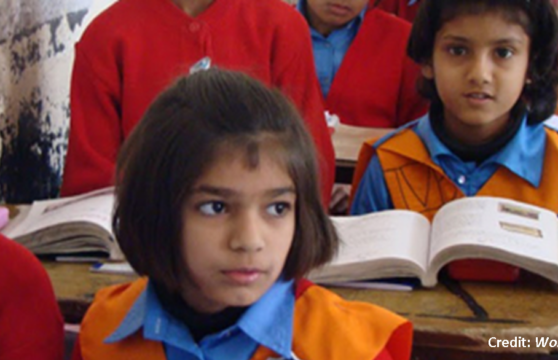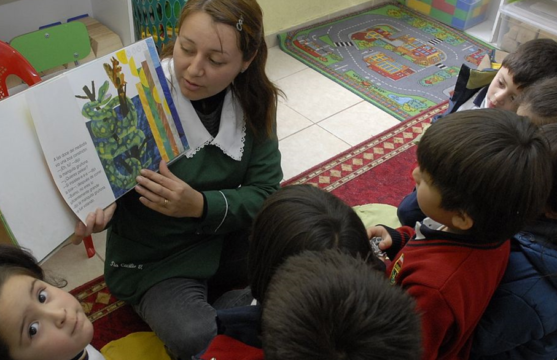
Achieving World Class Education in Brazil
An analysis of Brazilian education and the four recommendations offered to better compete with OECD systems by 2021.
This post is also available in: Spanish
In Colombia, school attendance for young kids is very high. Bolstered by a conditional cash transfer program, virtually all students between the age of 5 and 13 enroll in school. But rates fall as children enter their teens. By the time they are 17, one in five kids have dropped out.
What explains the decline? A major reason appears to be the costs associated with schooling. When dropouts are asked why they left, almost two thirds claim it is too expensive. Costs associated with re-enrollment, uniforms, books, and supplies accumulate and push poor children out of the education system.
So a team in Bogotá decided to test alternative variants of the conditional cash transfer program to see if a better design could improve attendance among teenagers.
Under the standard program, families receive a fixed amount of money each month for meeting certain health and schooling conditions. The team added two variations. The first, implemented in the district of San Cristobal where the standard program was already running, withheld one third of the payment and gave it as a lump sum when students were re-enrolling for the new school year. The second, in the district of Suba, again withheld one third of the payment, but this time offered a lump sum 20 times the original monthly allowance upon graduation.[1]
The new designs had significant impact. For kids staying in secondary school, the first variant increased re-enrollment by 4 percentage points. For kids finishing secondary school, the first variant boosted matriculation by 9.4 percentage points, while the second increased it by almost a half!
Interestingly, the first variant solved an apparent resource problem without even providing any extra resources.[2] It effectively just helped people save (something they could have done themselves). That these small details should not matter but do is perhaps why David Brooks has called interventions that harness them “small miracles” – policies that work not by improving information, resources, or access to markets, but by adopting a richer understanding of the human actor.
The social and psychological insights that underpin policies like this are the focus of the World Development Report 2015: Mind, Society, and Behavior. The report is organized around three ways that people think:
The examples in the WDR also how that quality social and psychological care in early childhood is essential for human development. In Jamaica, mothers of stunted babies were given support in providing cognitive, linguistic, and socioemotional care to their children. The curriculum included role-play and the use of homemade toys to promote high-quality interactions between mother and child. Twenty years later, there was no statistical difference between the incomes of stunted children who received support and a better-off group.
These short examples offer just a taste of how powerful behavioral insights can be. But take heed! With the benefit of hindsight, it can seem obvious why programs do or do not work. It’s much more difficult to accurately predict beforehand. The WDR 2015 shows that decisions are strongly influenced by subtle contextual features. It is often very difficult to discern what combination of frames, intention-action divides, social norms, cultural mental models, and other psychological and social influences are driving particular behaviors.
As a result, behavioral policy design requires a new way of looking at the intervention cycle. More resources must be invested in defining and diagnosing the problem. Multi-armed pilot experiments (that incorporate both quantitative and qualitative methods) can often then be the best way to shed light on the mechanisms that drive programmatic success as interventions are scaled up (see the intervention spiral in the figure below). The promise of behaviorally informed policy is still emerging. But by adopting an empirically rigorous, curious, and agile approach to policy design it can become a crucial aid in the design of effective education policies.
[1] The idea here was to save one third of the conditional cash transfer all the way through high school, but students who entered this program mid-way through high school still received the full amount.
[2] In the second variant, the transfer is only cost-equivalent to the original variant for students who go through six years of secondary education – the data applied to students who were three years or less away from graduation.
James Walsh (@j_sonam_walsh), Research Analyst, World Development Report 2015: Mind, Society, and Behavior
Varun Gauri (@varungauri), Co-Director, World Development Report 2015: Mind, Society, and Behavior
An analysis of Brazilian education and the four recommendations offered to better compete with OECD systems by 2021.
Why Pakistan represents “the biggest education reform challenge” and 12 lessons that are applicable to reform efforts around the globe.
An Interview with Manuel A. Alvarez Trongé and Alejandro J. Ganimian on the quality of education in Argentina.

